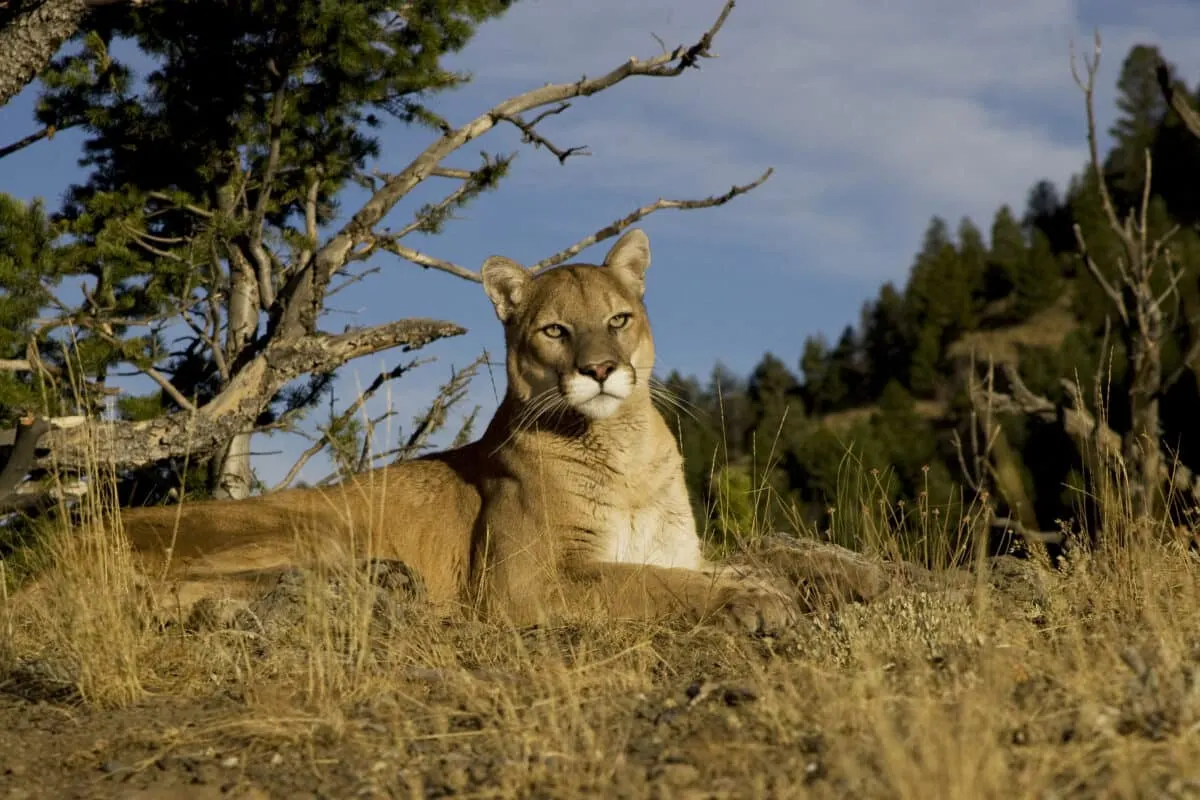The Death Valley is renowned for its otherworldly landscapes and extreme weather conditions. Spanning over 3.4 million acres, this vast desert is home to a surprising array of unique and resilient animal species.
From powerful predators to small desert dwellers, the park’s diverse wildlife captures the essence of adaptation and survival in harsh environments. This article presents a listicle of the top 10 animals found in Death Valley, showcasing their remarkable characteristics, behaviors, and significance within the fragile ecosystem.
1. Mountain Lion
The Cougar is also known as a top carnivore and predator in Death Valley due to its striking features. With its muscular build and keen senses, this solitary feline reigns over the desert landscape.
Mountain lions primarily inhabit the valley’s rugged mountain ranges, relying on stealth and agility to hunt their prey. Their broad diet includes mule deer, bighorn sheep, and smaller mammals. Despite their elusiveness, mountain lions control herbivore populations and thereby maintain the delicate balance of nature.
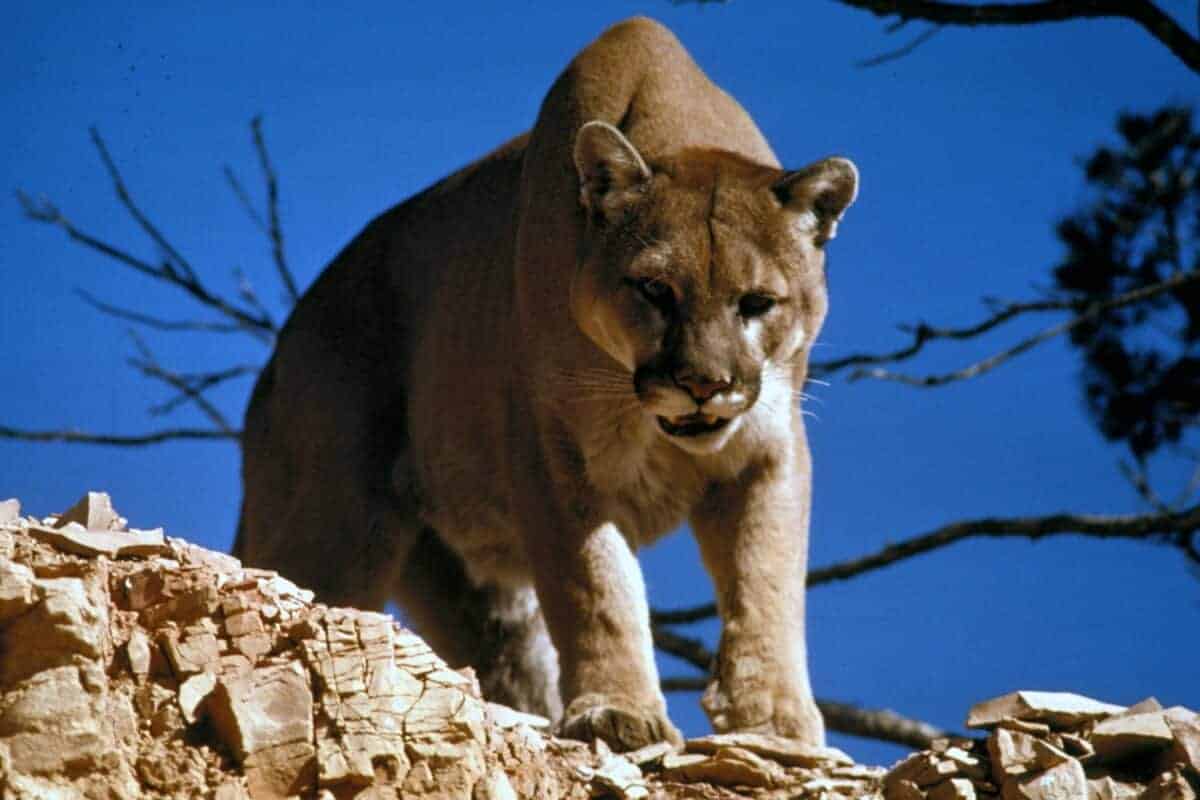
2. Desert Bighorn Sheep
These magnificent creatures have adapted to the arid environment with specialized traits. Their distinctive curved horns help them navigate steep and rocky terrain while padded hooves stabilize rugged surfaces.
Desert bighorn sheep are well-suited for water conservation, obtaining the most moisture from their diet. These majestic animals are not only a symbol of resilience but also an indicator of the park’s ecological health.
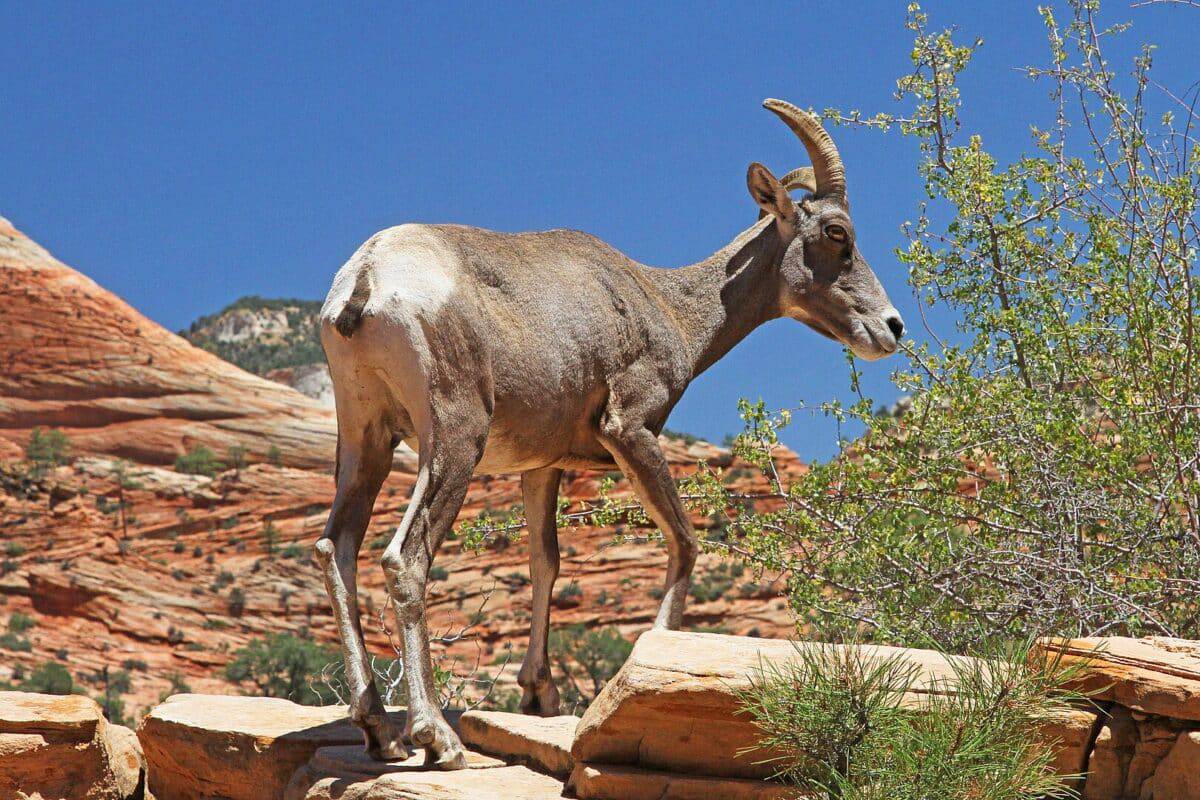
3. Coyote
The adaptable Coyote is a familiar sight in Death Valley. These highly intelligent canines have successfully adapted to various habitats, including deserts. Their diet comprises small mammals, birds, reptiles, and fruits.
They play an essential role in the ecosystem by controlling rodent populations. Their skill in thriving in harsh conditions is truly evident in their evolution, stubbornness, and ability to scrounge up food and water no matter what.
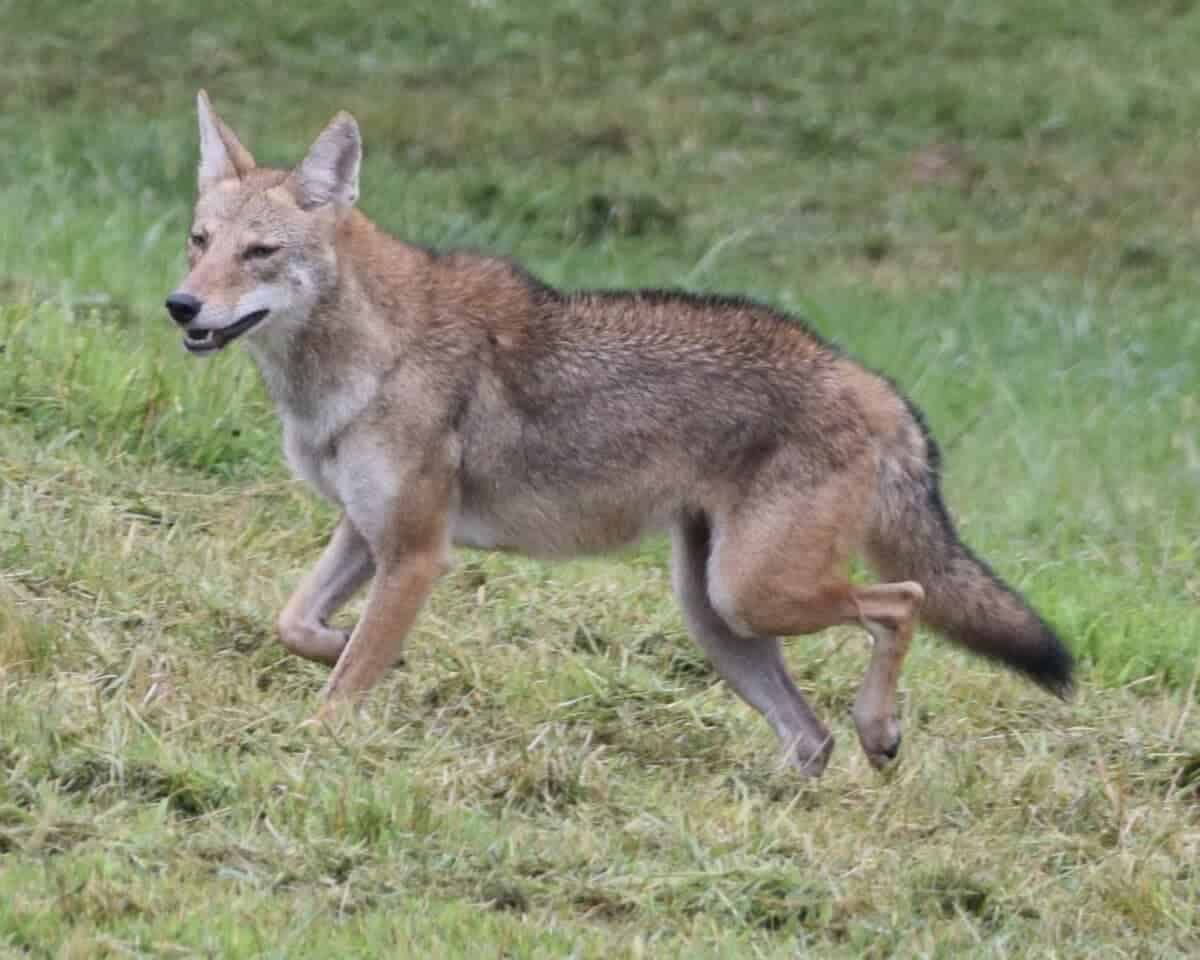
4. Sidewinder Rattlesnake
The sidewinder rattlesnake is a master of survival in the desert. Its unique sideways movement pattern, where it propels itself using only two points of contact with the sand, minimizes its exposure to extreme surface temperatures.
Equipped with specialized heat-sensing organs, this venomous snake can detect warm-blooded prey, even in complete darkness. The sidewinder’s venomous bite immobilizes its prey, mainly small rodents. This fascinating reptile has evolved to thrive in the challenging environment of Death Valley.
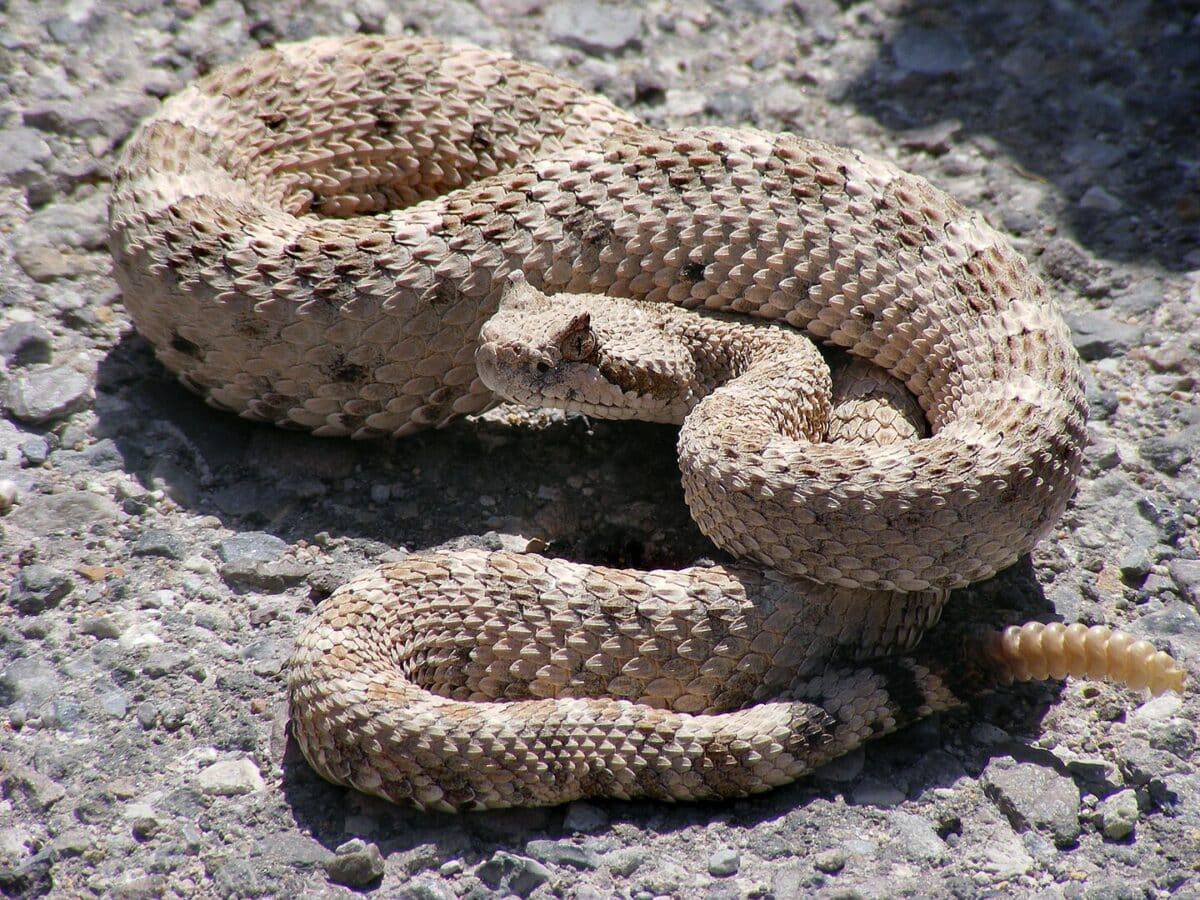
5. Desert Tortoise
The desert tortoise is known for its longevity and resilience. These ancient reptiles have adapted to extreme heat and scarce water sources by retreating into underground burrows during the day’s hottest hours. Desert tortoises have evolved the ability to store water in their bladder, enabling them to survive for extended periods without drinking.
Regrettably, the desert tortoise populations have experienced a decrease in numbers due to the loss of their natural habitats and human-related actions. Conservation initiatives have been implemented in response to safeguard and rehabilitate their habitats, thereby securing the long-term survival of this iconic species that thrives in the desert ecosystem.
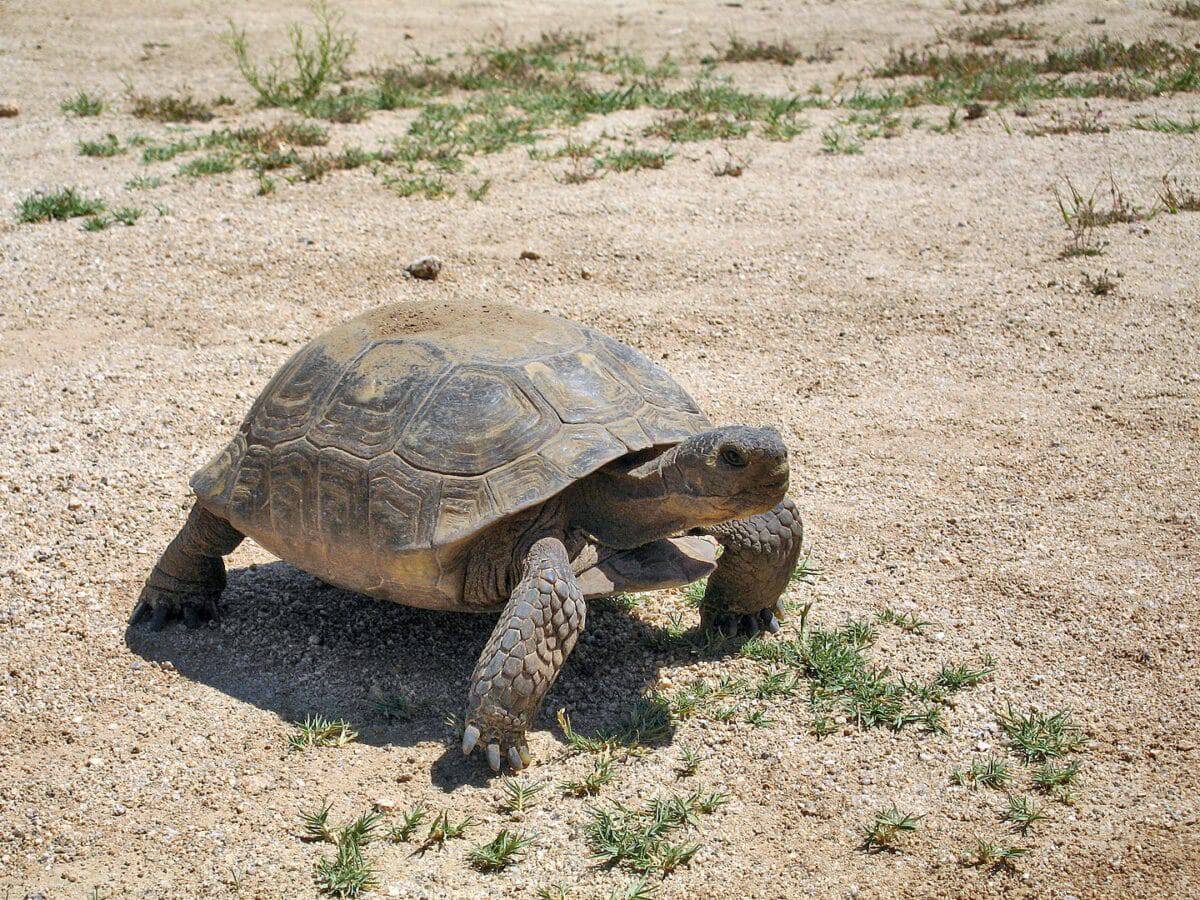
6. Chuckwalla
The Chuckwalla, found in the rocky areas of Death Valley, is a charismatic reptile. It is well adapted to its environment, with its flattened body enabling it to squeeze into narrow crevices to escape predators. Chuckwallas are herbivores, feeding on various vegetation, including leaves, flowers, and fruits.
Their ability to inflate their bodies to deter predators and their remarkable tolerance to high temperatures are known. These fascinating reptiles contribute to the park’s biodiversity and indicate the desert’s health.
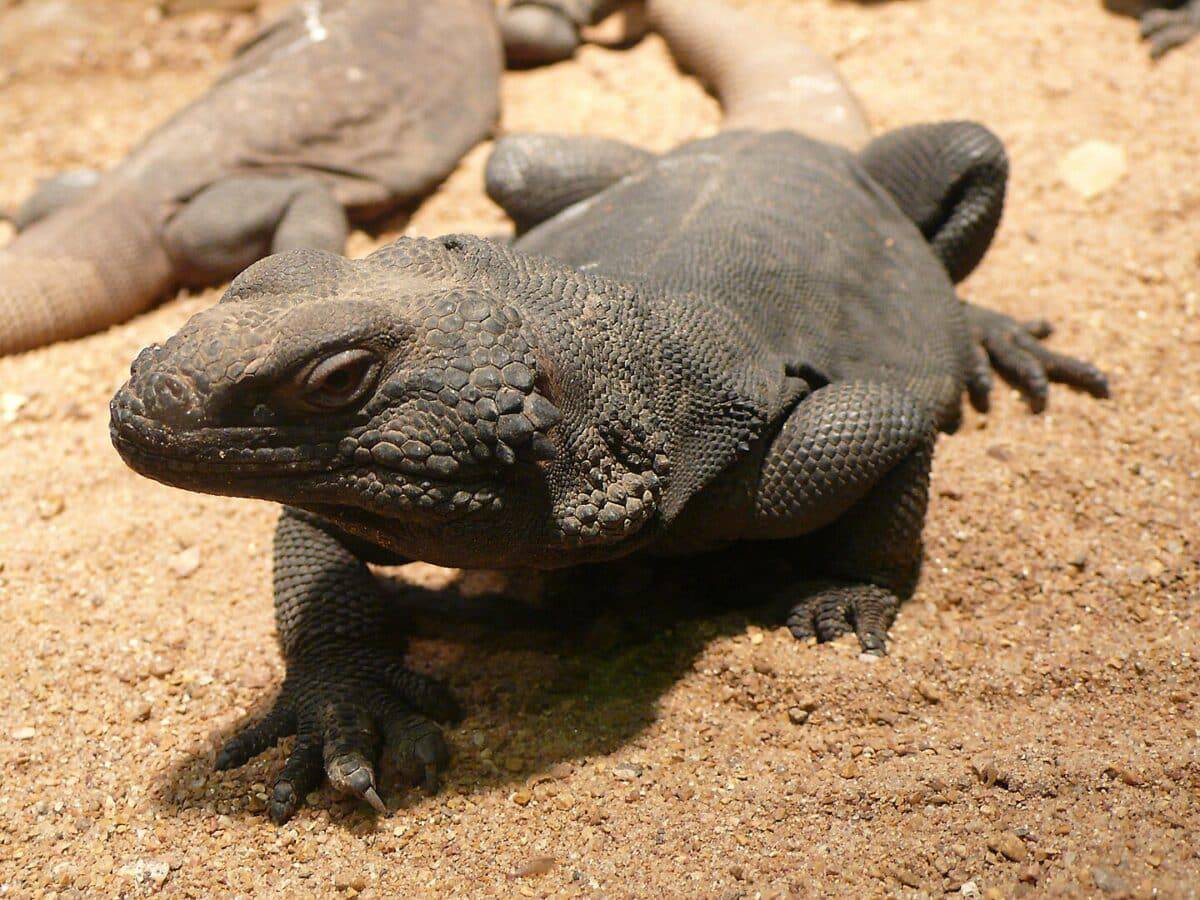
7. Rosy Boa
The rosy boa is a small but enchanting snake species that calls Death Valley home. Its distinctive pinkish-brown coloration and smooth scales stand out among the rocky desert terrain.
Rosy boas are constrictors, using their muscular bodies to capture and subdue prey, primarily small mammals. They are nocturnal creatures, venturing out at night in search of food. Although they may be elusive, these harmless and docile snakes are important in maintaining the region’s ecological balance.
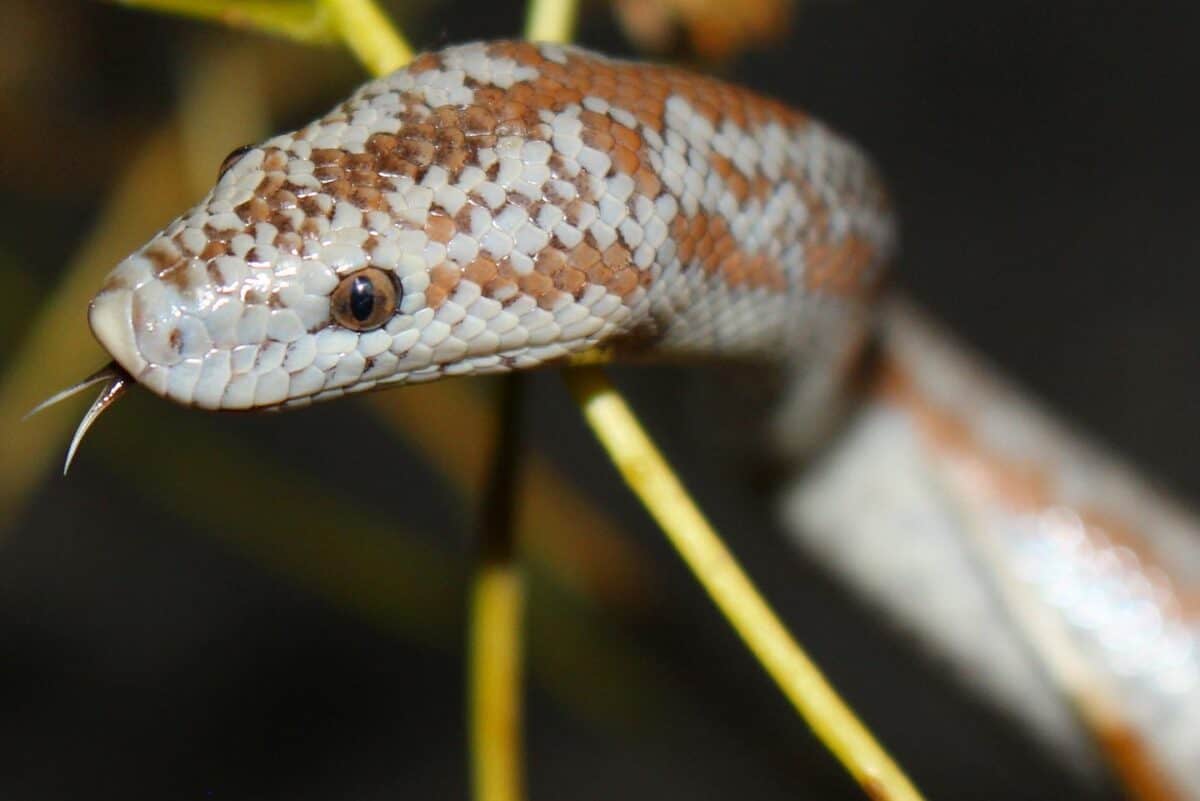
8. Chisel-Toothed Kangaroo Rat
The chisel-toothed kangaroo rat is a unique, fascinating rodent species in Death Valley. These small mammals have kangaroo-like hind legs, allowing them to hop efficiently across the desert floor. These animals have developed impressive adaptations to thrive in dry desert conditions, acquiring the majority of their water needs through the consumption of their food sources.
Kangaroo rats have specialized cheek pouches where they store seeds, which serve as a vital food source during dry periods. Their burrowing behavior significantly impacts soil aeration and seed dispersal, making them important contributors to the ecosystem.
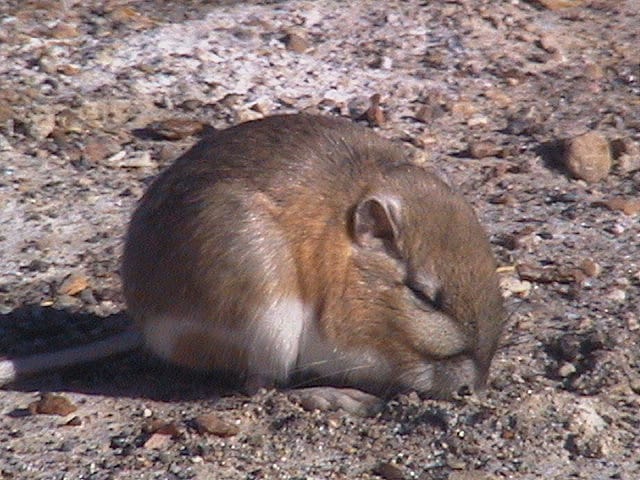
9. Roadrunners
Roadrunners are charismatic birds that are synonymous with the desert landscapes of Death Valley. Known for their unique appearance and distinctive running abilities, these birds can reach impressive speeds of up to 20 miles per hour. These creatures exhibit a wide-ranging diet that encompasses insects, small reptiles, rodents, and fruits.
Additionally, Roadrunners are highly adaptable and have developed interesting behaviors, such as sunning themselves to regulate body temperature. These agile and resourceful birds are an iconic symbol of the desert ecosystem.
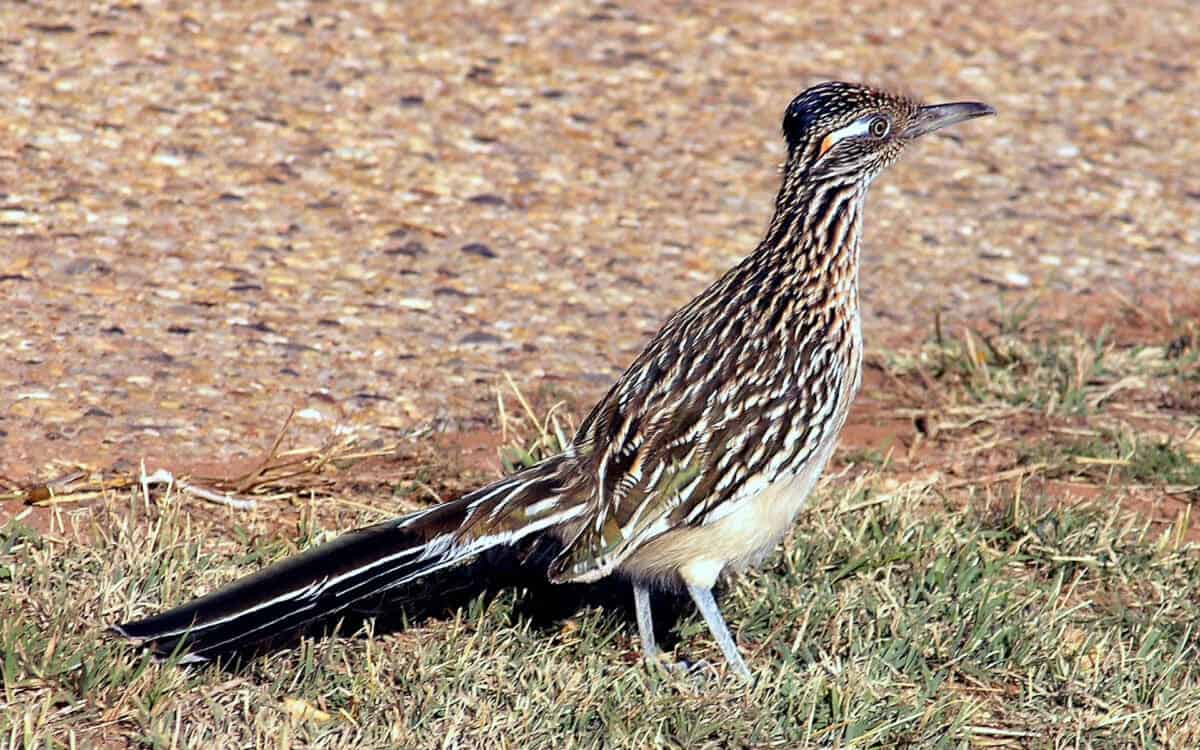
10. Desert Cottontail
The desert cottontail is a small mammal that thrives in the arid environments of Death Valley. This bunny adapts to the desert heat with its soft fur and large ears. Desert cottontails primarily consume plants and grasses, making them herbivores. Their remarkable speed and agility are notable attributes that assist them in avoiding predators.
Moreover, as important prey species, they contribute to the food web within the park. The desert cottontail’s presence adds charm and vitality to the desert landscape.
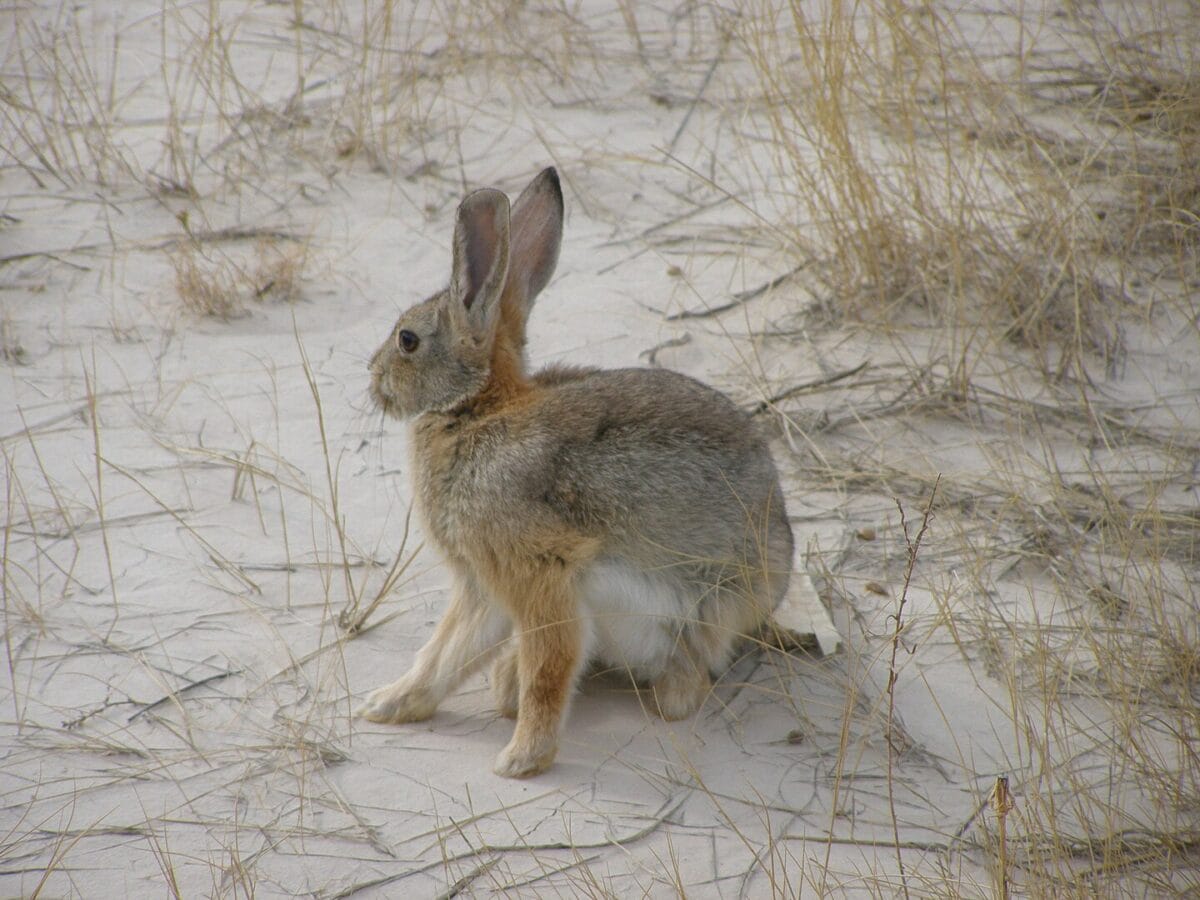
Frequently Asked Questions
Do poisonous snakes exist in Death Valley?
Death Valley is home to venomous snakes, including the sidewinder rattlesnake. Visitors should exercise caution and give these reptiles a wide berth to avoid potential encounters.
How can I spot a mountain lion in the park?
Mountain lions are known for their elusive nature and tendency to steer clear of human interaction. Your best chance of spotting one is by observing tracks, scratch marks on trees, or signs of recent kills. In the event of encountering a mountain lion, it is crucial to prioritize safety by keeping a safe distance and refraining from approaching the animal.
What is the best response when coming across a desert tortoise?
If you happen upon a desert tortoise in Death Valley, it is of utmost importance to appreciate it from afar and refrain from touching or causing any disturbance to the animal.
These protected species are best left undisturbed in their natural habitat. If you believe the tortoise is injured or in distress, notify park authorities for assistance.
The Bottom Line
The incredible diversity of animal life in Death Valley National Park is a testament to the adaptability and resilience of species in the face of harsh desert conditions. Each animal plays their own role in maintaining the ecosystem’s fragile hold, from powerful predators like the mountain lion to small desert dwellers like the chisel-toothed kangaroo rat.
Protecting and preserving their habitats ensures these remarkable creatures’ continued survival and thriving. Exploring the wildlife of Death Valley offers a unique opportunity to witness the wonders of nature’s ingenuity in the most extreme environments.
If you enjoyed this blog, read more on:
Top 10 Animals with Long Necks
In The Heat Of The Desert: The Roadrunner Outruns A Rattlesnake
Top 10 Galápagos Islands Creatures
Join our Forum for free today!

- Usain Bolt vs. Peregrine Falcon – Speed Test in Their Domains - May 18, 2024
- Top 10 Animals in Yellowstone National Park - April 12, 2024
- Top 10 Omnivores - March 9, 2024

